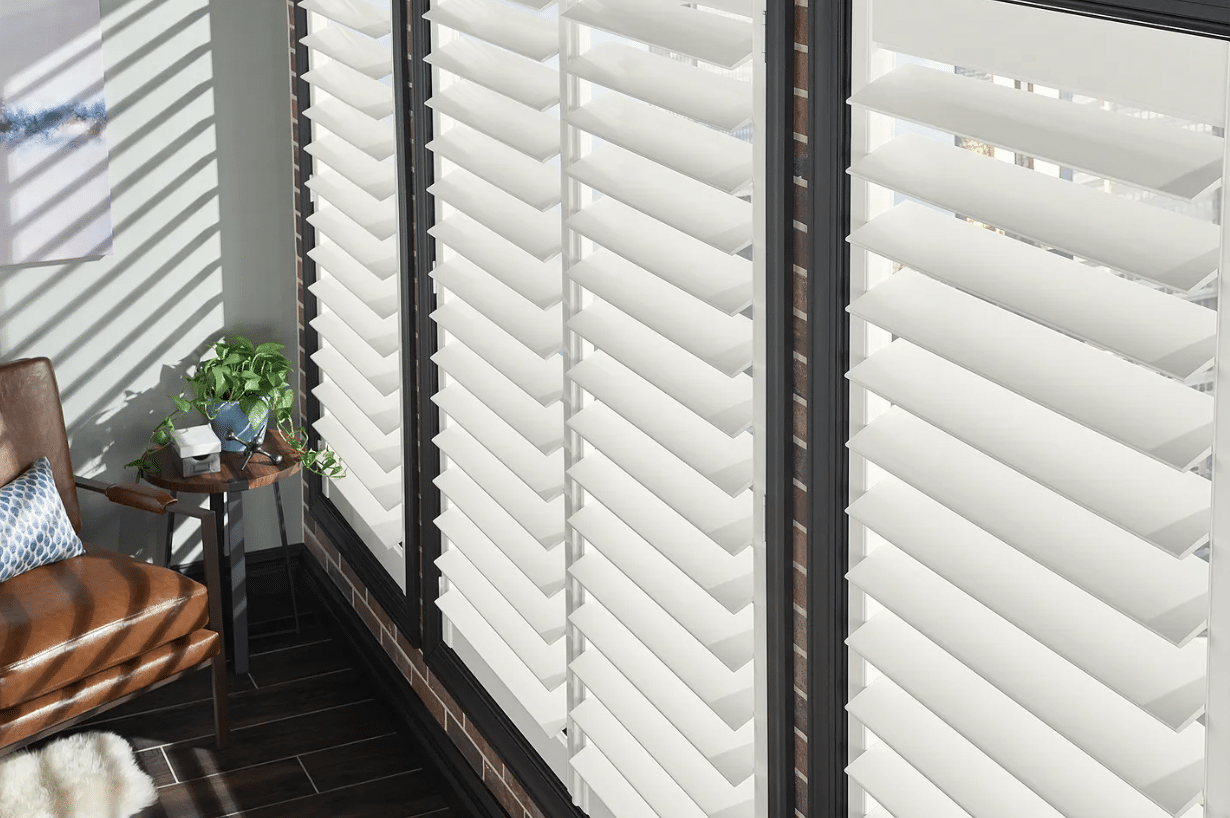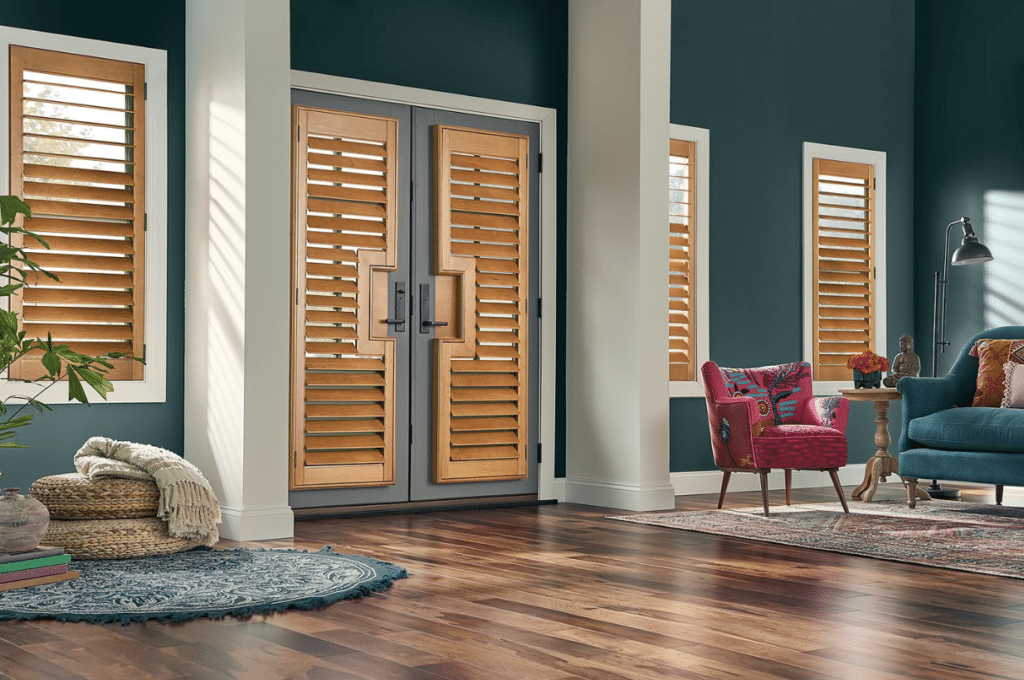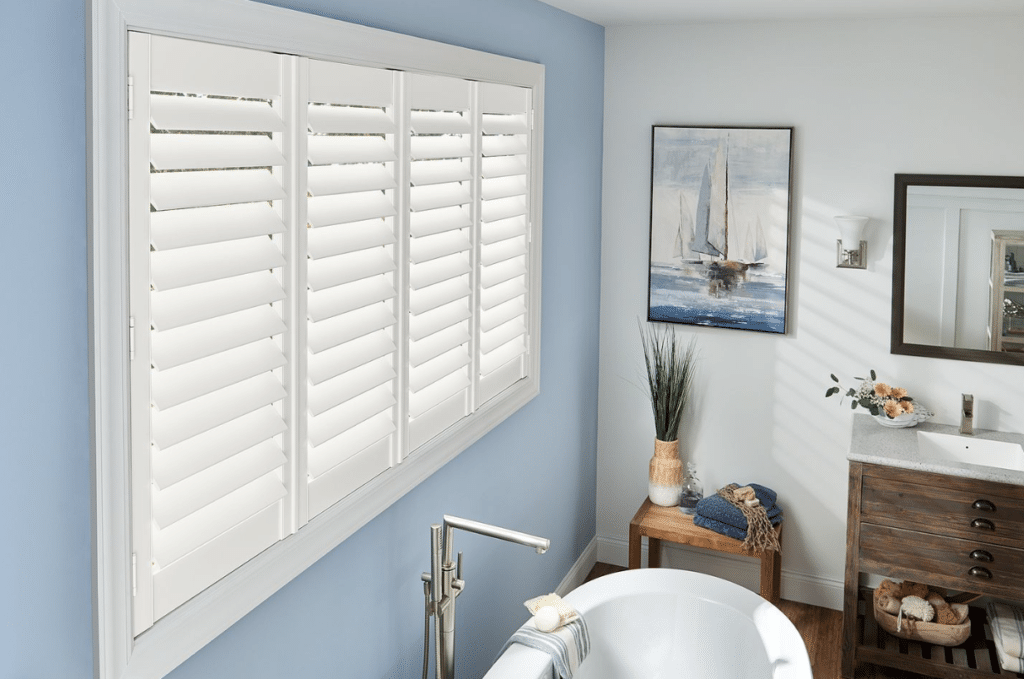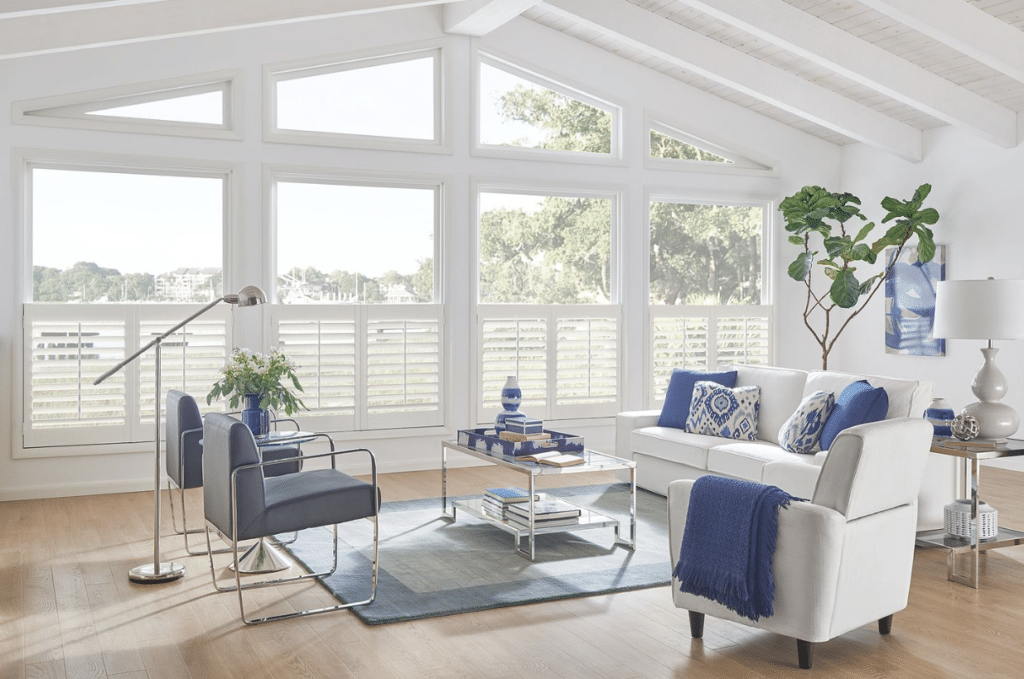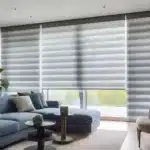Wood or Composite Shutters: Which Is Right for Your Home. They are one of the oldest window treatments in the world, and they have a timeless look that makes them a great choice for nearly any room. On top of that, they feel less like window treatments and more like part of a room’s architecture. When you install shutters, you truly enhance your home. Take a look at some ideas.
When buying shutters, you’ll find two main categories: wood and composite. Although they look quite similar—in fact, it can be hard to tell the wood shutters from the composite—there are some important differences. Wood shutters, in general, are slightly more expensive than composite shutters. But cost isn’t the most significant difference between the two options. Different materials create them, and these materials dictate where each kind of shutter works best. For example, a wood shutter might be a great option for your living room, but it wouldn’t be a good idea for your bathroom. We’ll go over why that is and show you where in the home each shutter functions at its very best.
A Closer Look at the Differences
Both wood and composite shutters are durable. Extremely durable. Well-cared-for shutters can look great for decades. The difference in durability becomes apparent only in more extreme environments—places where moisture, humidity, and changes in temperature are an issue. That kind of jungle-like environment can take its toll on wood, causing warping, cracking, and loss of finish. A composite material will not be affected by moisture, humidity, and temperature changes. If heat and moisture will be a factor in a room, choose composite shutters.
From a distance, there is virtually no difference between wood shutters and composite shutters. In fact, you must get close to the window to see if the shutter is made from wood or composite material. Up close, it is clear which shutters are made with real wood—and this is an important consideration for people decorating homes where the shutters will be viewed up close or adjusted by hand. For some people, this is a very important factor—real wood feels authentic to them, and they want to convey that authenticity in their décor.
Shutters, whether wood or composite, are easy to clean. Simply dust with a feather duster or clean with the upholstery attachment of your vacuum cleaner. Composite shutters have the advantage of tolerating soap and water, making it easier for you to get your shutters squeaky clean. In general, you’ll want to avoid getting your wood shutters wet.
Real wood shutters cost somewhat more than composite shutters. But both real and composite shutters offer the same long life—so you enjoy decades of reliable performance. Where cost is a strong consideration, choosing composite shutters for your project can be a more affordable option.
All Shutters Offer a Classic Look
A home filled with interior shutters has a sense of solidity and elegance that’s hard to match. Both wood and composite shutters share this design power, but there are a few differences.
When viewed up close, naturally finished or stained wood shutters are unmatched in their beauty. The real wood grain has an organic quality that no other material can match. It is a luxurious touch that can elevate a living room or dining room—or give a sense of stateliness to a bedroom or home office.
But the thing to remember when comparing wood and composite shutters is that it’s not a contest—they’re actually designed to complement one another. In fact, composite and wood colors and finishes cross over so you can install real wood shutters in the living room (where the temperature and humidity are relatively stable) and matching composite shutters in the kitchen (near the stove where there’s a lot of heat and humidity)—and no one will know the difference! These are products that have been engineered to work together wherever you put them. The slight cost difference between the two is a product of material costs. But both are built with the same high quality and function exactly the same, each in its preferred environment. And both are of similar weight—with composite shutters generally weighing a bit more than wood shutters.
Which Shutter Option Is Right for You?
Choosing between wood and composite shutters is simple. For living rooms, dining rooms, bedrooms, home offices, and any other room that has relatively stable temperature and humidity. Wood shutters are the ideal choice. But if you’re installing your shutters in a bathroom, kitchen, laundry room, or if you live in a climate where the temperature and humidity fluctuates a lot, composite shutters are the right option. Wood shutters do cost slightly more than composite shutters. But you should be sure to compare the costs of both options before you make a decision.
So Which Is Better?
Both. Wood and composite shutters are built to do specific jobs—and our wood and composite shutters do those jobs exceptionally well. Couvrant Wood Shutters bring the beauty of real wood into the home while Couvrant Composite Shutters bring the sturdy good looks of shutters into high-humidity environments. If you like the look of shutters, you can use them throughout your home.
When it comes to Couvrant shutters, you don’t have to worry about making the wrong choice. Our Designers Experts at Couvrant is there to help you decide which type of shutter is right for each window. They have the experience and information to find just the right designs and materials. Plus, they can help you coordinate all the window treatments in your home. Whether they’re shutters or blinds, shades or drapery.

